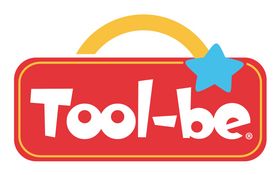
Do you know the importance of early reading?
Do you know the importance of early reading?
Adults are responsible for helping children develop their reading habits from babies!
During the first months of life we lay the foundations for the development of language, both in its component of expression and understanding.

When we read to our children, we are helping them:
Reading stories, stories and poetry aloud from an early age has shown enormous benefits in cognitive development, creativity, speech, expression, attention and understanding of what is heard.

It can be a key factor in your child's reading habit later in life. So cheer up! Every day read short and animated stories to the baby, this will stimulate him to create sounds and understand language, but above all it will generate a magical form of communication between parents and children.
We have some important recommendations for you when choosing books:
- Books with a thick sheet, can be cardboard or foamy: These are ideal for your baby to learn to manipulate the book and not tear the sheets.
- Books to learn words through an image: Choose books , hopefully with photographs , or Tool-be® Flash Cards , so that your baby has a real image of the object. Talk about the object, the colors, the sounds it makes. These books will help your baby learn new vocabulary and match pictures with words.
- Books with several simple images that facilitate storytelling and little text: With the images in the books you can invent your own stories . You don't need to have text to do this. We recommend talking about objects, colors, sounds, the interaction between objects, etc. The Tool-be® Story Book is perfect for making up stories.
- Poetry Books (If your baby is older than 5 months): There are baby poetry books you can read. These books are rich in rhyme and new vocabulary and help you in the development of attention and listening.
- Plastic books for the bath: They are simple and help your baby to interact with the book and reading during bath time.
- Books with textures (If your baby is over 9 months old): With these books your baby can experience different sensations. Encourage your baby to touch the textures and talk to him about the feel and colors. For example: "Touch this white bunny, his fur is very soft."
- Window Books (If your baby is older than 10 months): Help your baby develop a sense of object permanence. With these types of books it is important that you question your baby by asking where an object is. Little by little he will open the windows looking for him.
- Books that tell short stories (If your baby is over 12 months old): With them, the baby will learn to follow the sequence of the story as we turn the pages. As our baby grows we increase the complexity of the stories and the amount of text we read.
- Interactive books with sounds or moving parts (If your baby is over 12 months old).
- Books that teach concepts or show a real situation that the baby is going through (If your baby is over 16 months): Colors, shapes, opposites, quantities, stories of leaving diapers, fears, emotions, family members .

Don't forget to put these tips into practice for reading time:
- It is very important from an early age to establish "reading time" in your baby's daily routine. It can be a time to share with the family.
- The attention span of babies is very short, however, a position that invites us to collect ourselves in reading is to place your baby on your lap to read the book together.
- Let your baby explore books with her hands and her mouth. The book is a toy for them and reading is a time of great fun and at the same time a lot of learning and interaction.
- It is essential that inside the house there is a space for reading, with shelves where children can have easy access to books. Shelves where the book is located with its cover facing forward are highly recommended as your baby will be able to easily identify the book.
- Turn every reading moment into a magical moment. Use different voices to recreate the stories with the different characters, vary the tone and volume of your voice, use exaggerated gestures and expressions. You can even use element sounds as if they were part of the story (bells, drums, footsteps, etc.).
- When you have books with a lot of text, it is much more profitable to tell the story in your own words, simple and clear words.
- Point to the pictures and ask your baby simple questions: "Where is the dog?", "How does the cow moo?"
We invite you to sing the songs of Tool-be , to accompany the stories of books that you find with the same theme.
Find this and more information in the Tool-be® be-2 Booklet. You can buy it at tool-be.com or in our IG store 👆
⭐At Tool-be we accompany you at each stage of your baby so that you can support him in developing his full potential. ✅
Products


